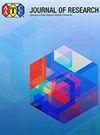大学生服装消费行为的环境影响评价
IF 1.2
4区 工程技术
Q4 MATERIALS SCIENCE, TEXTILES
引用次数: 0
摘要
生活方式的改变改变了人们的消费行为。洗衣和烘干是服装消费过程中最耗能、最耗能的活动之一,对环境的碳排放和水消耗影响显著。大学生是一个特殊的群体,他们的世界观正处于发展阶段,研究和培养他们对环境消费的信念和行为具有重要意义。本研究对大学生消费行为与环境影响的关系进行了调查和评价。根据中国杭州125名大学生的洗涤行为,将其分为三种不同的洗涤模式:h模式(仅手洗)、m模式(仅机洗)和hm模式(手洗机洗)。采用直接消费碳足迹(CC F dir)和直接消费水足迹(CW F dir)方法计算大学生的环境影响,包括水足迹和碳足迹。结果表明,影响杭州大学生服装消费行为环境影响的因素为:洗涤频次、消费者知识、洗涤方式、烘干频率和方式、服装购买数量。研究还表明,更高的洗涤和干燥频率会导致更多的能源和水消耗,最终导致更严重的环境影响。此外,消费者知识、洗涤干燥方式对大学生的CC F指数和CW F指数有显著影响。了解大学生服装消费行为的影响因素,有助于培养大学生的环保意识,并为政府和高校识别大学生服装消费对环境的影响提供指导。本文章由计算机程序翻译,如有差异,请以英文原文为准。
Environmental Impact Assessment of Undergraduate Apparel Consumption Behavior
Lifestyle changes have altered the consumption behavior of people. As one of the most energy-intensive and energy-consuming activities in the apparel consumption process, laundry and clothes drying have a significant impact on the environment in terms of carbon emissions and water consumption. Undergraduates are a special category of people whose worldviews are in the developmental stage, and it is important to study and develop their beliefs and behaviors regarding environmental consumption. This study investigates and evaluates the relationship between undergraduates’ consumption behaviors and environmental impacts. The 125 undergraduates in Hangzhou, China are classified into three different washing modes: H-mode (hand-washing only), M-mode (machine-washing only), and HM-mode (hand- and machine-washing) on the basis of their washing behavior. The environmental impacts including water footprint and carbon footprint of undergraduates are calculated by the methods of direct consumptive carbon footprint ( CC F dir ) and direct consumptive water footprint ( CW F dir ). The results show that the factors leading to the environmental impacts of Hangzhou undergraduates’ apparel consumption behavior are: washing frequency, consumer knowledge, washing method, drying frequency and method and clothing purchase quantity. It also reveals that higher washing and drying frequencies can lead to more energy and water consumption, which ultimately result in more severe environmental impact. Besides, consumer knowledge, washing and drying method do have a significant influence on undergraduates’ CC F dir and CW F dir . Understanding the factors that influence undergraduates’ apparel consumption behavior can help cultivate their environmental awareness as well as provide guidance to the government and universities in identifying the environmental impact of undergraduates’ clothing consumption.
求助全文
通过发布文献求助,成功后即可免费获取论文全文。
去求助
来源期刊

AATCC Journal of Research
MATERIALS SCIENCE, TEXTILES-
CiteScore
1.30
自引率
0.00%
发文量
34
期刊介绍:
AATCC Journal of Research. This textile research journal has a broad scope: from advanced materials, fibers, and textile and polymer chemistry, to color science, apparel design, and sustainability.
Now indexed by Science Citation Index Extended (SCIE) and discoverable in the Clarivate Analytics Web of Science Core Collection! The Journal’s impact factor is available in Journal Citation Reports.
 求助内容:
求助内容: 应助结果提醒方式:
应助结果提醒方式:


